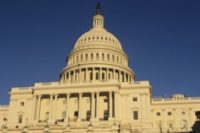OSHA had fewer health and safety inspectors in 2011 than in 1981 – the first year of the Reagan administration -- even though the number of workplaces doubled to 9 million from 4.5 million, and the number of workers rose from 73.4 million to 129.4 million.
An analysis by the Center for Effective Government on the budget levels for OSHA and other federal regulatory agencies finds that after adjusting for inflation, OSHA will receive less funding than it did during the George W. Bush administration – even if the president receives all the funding requested in his budget, which is unlikely, given previous Congressional budget action.
The Center compiled data using White House budget documents going back to fiscal year 2004 (the federal fiscal year is October 1 through September 30) and adjusted them for inflation to come up with a 12-year-look at OSHA's budget:
| 2004 | 554 |
| 2005 | 543 |
| 2006 | 535 |
| 2007 | 538 |
| 2008 | 519 |
| 2009 | 552 |
| 2010 | 585 |
| 2011 | 573 |
| 2012 | 565 |
| 2013 | 527 |
| 2014* | 529 |
| 2015* | 530 |
*The budget data for fiscal year 2014 is an estimate, and the numbers for fiscal year 2015 represent only the White House budget request. Congress will ultimately set 2015 budget levels later this year, either through appropriations legislation or a continuing resolution that maintains current levels of funding.
From the report:
The levels have been adjusted to 2012 dollars using the White House Office of Management and Budget's (OMB) non-defense Gross Domestic Product Deflator. For questions about the data, please feel free to contact staff at the Center for Effective Government.
The agency-wide budget numbers are "budget authority" – this is what Congress votes on when it sets appropriations. It is "the authority provided by law to incur financial obligations that will result in outlays," according to OMB. "In deciding the amount of budget authority to request for a program, project, or activity, agency officials estimate the total amount of obligations they will need to incur to achieve desired goals and subtract the unobligated balances available for these purposes. The amount of budget authority requested is influenced by the nature of the programs, projects, or activities being financed."
The program level numbers are obligations, which, according to OMB, include "the current liabilities for salaries, wages, and interest; and contracts for the purchase of supplies and equipment, construction, and the acquisition of office space, buildings, and land."
Research: Mark Boyd, Nick Schwellenbach, and Ronald White
Text: Nick Schwellenbach and Ronald White
Table Layout: Katie Vann
Other Contributions: Katherine McFate, Scott Klinger, and Brian Gumm




